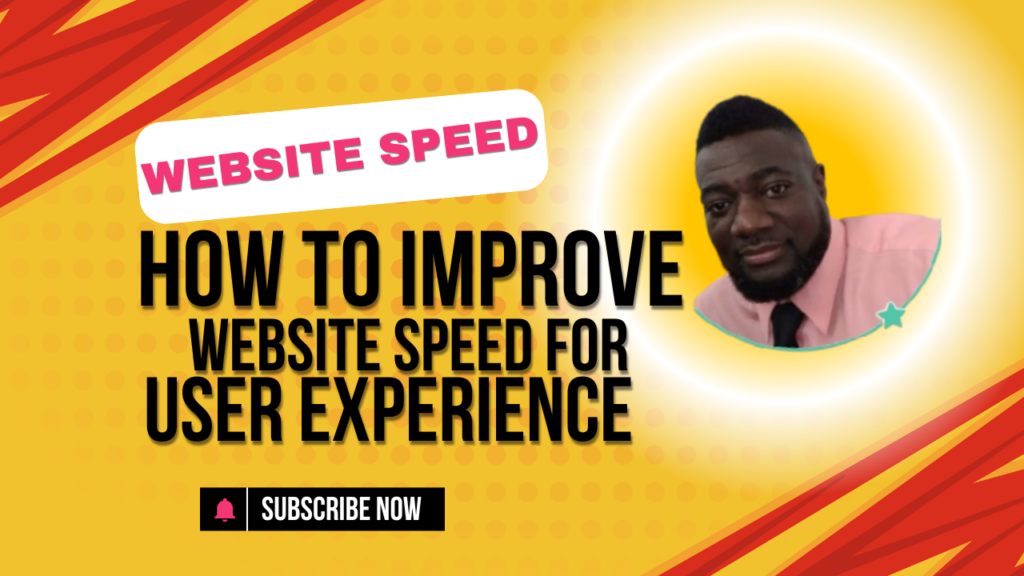
In today’s fast-paced digital world, website speed is more important than ever. A slow website can frustrate users, decrease engagement, and ultimately harm your search engine rankings. Research shows that 53% of mobile users will leave a page if it takes longer than three seconds to load.
Additionally, Google uses page speed as one of its ranking factors, meaning that a slow website can hurt your SEO efforts.
Improving your website’s speed isn’t just about making it load faster—it’s about providing a better user experience, increasing conversion rates, and keeping visitors happy.
In this article, we’ll explore various strategies to help you enhance your website’s performance, ensuring that your visitors have a seamless browsing experience.
1. Test Your Website Speed
Before you start making changes, it’s important to know how fast (or slow) your website is performing. Several tools can help you measure your website speed and identify areas for improvement.
- Google PageSpeed Insights: This free tool by Google provides valuable information on your website’s performance and gives specific recommendations for improvements.
- GTmetrix: GTmetrix analyzes your site’s speed and provides a detailed report on load times, along with suggestions for optimization.
- Pingdom: This tool provides performance insights and gives a breakdown of your website’s speed on different devices and locations.
By running these tests, you can get a baseline measurement of your site’s speed and pinpoint the areas that need attention.
2. Optimize Your Images
Images are often the largest files on a website and can significantly affect your page’s load time. Optimizing images can make a noticeable difference in performance.
- Compress Images: Use tools like TinyPNG, ImageOptim, or Adobe Photoshop to reduce the file size of your images without sacrificing quality.
- Use the Right File Format: JPEG is ideal for photos, while PNG is better for images with transparency. WebP is a modern format that provides excellent compression and quality.
- Lazy Load Images: Lazy loading is a technique where images are only loaded when they come into view as the user scrolls down the page. This reduces the initial load time and saves bandwidth.
By optimizing your images, you can significantly reduce load times, improve website performance, and provide a smoother user experience.
3. Leverage Browser Caching
Browser caching allows users’ browsers to store some files locally, so they don’t have to download them every time they visit your site. This can significantly speed up repeat visits to your website.
- Set Expiry Dates: Configure your server to instruct browsers to cache certain elements (like images, CSS files, and JavaScript) for a set period. This way, users won’t have to download them again during subsequent visits.
- Use Cache-Control Headers: These headers tell the browser how long it should store files and when it should request new versions.
By leveraging browser caching, you can make your website faster for returning visitors and reduce the load on your server.
4. Minify CSS, JavaScript, and HTML
Minification is the process of removing unnecessary characters (such as spaces, line breaks, and comments) from your website’s code. Minifying your CSS, JavaScript, and HTML files can help reduce their size, making your website load faster.
- CSS Minification: Compress your CSS files by removing spaces, comments, and line breaks.
- JavaScript Minification: Similarly, minify your JavaScript files to reduce their size and improve performance.
- HTML Minification: Removing unnecessary spaces and characters from HTML files can also improve speed.
You can use tools like UglifyJS (for JavaScript) and CSSNano (for CSS) to automatically minify your code. Many content management systems (CMS) like WordPress also offer plugins that can handle this process.
5. Use a Content Delivery Network (CDN)
A Content Delivery Network (CDN) is a network of servers that are distributed across various geographic locations. When a user visits your website, the CDN serves the content from the server that is closest to them, reducing load times.
- Faster Content Delivery: By using a CDN, your website’s content (like images, videos, and scripts) is cached and distributed across multiple servers worldwide. This ensures faster content delivery, especially for users in different regions.
- Reduced Latency: CDNs reduce the distance between your users and the server, which can improve page load times and decrease latency.
Popular CDN providers include Cloudflare, StackPath, and Amazon CloudFront. Integrating a CDN into your website can dramatically improve speed and user experience.
6. Enable GZIP Compression
GZIP compression is a method of compressing your website’s files before they are sent to the user’s browser. This reduces the size of your web pages, allowing them to load faster.
- Text-Based Files: GZIP compression works best with text-based files like HTML, CSS, and JavaScript. By compressing these files, you can reduce their size by up to 70%.
- Server-Side Compression: To enable GZIP, you can configure your server (using Apache or Nginx) to automatically compress files before they are sent to users’ browsers.
Enabling GZIP compression is a quick and effective way to reduce file sizes and speed up your website.
7. Optimize Your Web Hosting
The performance of your web hosting service plays a significant role in your website’s overall speed. If you’re using shared hosting, you may experience slower speeds due to limited resources shared between multiple sites.
- Upgrade Your Hosting Plan: If your website is growing or receiving more traffic, consider upgrading to a VPS (Virtual Private Server) or dedicated server, which offers more resources and better performance.
- Choose a Reliable Host: Select a hosting provider with a reputation for fast, reliable service. Research reviews and performance benchmarks before committing to a host.
A reliable web host with fast server speeds can make a significant difference in how quickly your website loads.
8. Reduce HTTP Requests
Every element on your page (images, CSS files, JavaScript files, etc.) requires an HTTP request to load. The more requests your website makes, the slower it will be.
- Combine Files: If possible, combine multiple CSS or JavaScript files into a single file. This reduces the number of requests required to load your page.
- Use Fewer Elements: Reducing the number of images, scripts, and other elements on your pages will lower the number of HTTP requests needed.
By minimizing HTTP requests, you can reduce load times and enhance your website’s performance.
9. Remove Unnecessary Plugins and Scripts
While plugins and third-party scripts can add functionality to your website, they can also slow it down if they are not optimized.
- Audit Your Plugins: Regularly review the plugins installed on your site. Deactivate and delete any plugins that you no longer need or use.
- Limit Third-Party Scripts: Be selective about the third-party scripts (like ad networks, social media widgets, and analytics) you include on your site. Unnecessary or poorly optimized scripts can significantly slow down your website.
By eliminating or optimizing these resources, you can improve site speed and ensure a better user experience.
10. Monitor and Regularly Test Your Website Speed

GTMetrix Test Website Speed
Read this article all about GTMextix
Once you’ve made these improvements, it’s important to continuously monitor and test your website’s performance. Regular testing ensures that your site remains optimized and provides the best possible user experience.
- Set Up Alerts: Use monitoring tools like Google Analytics, GTmetrix, or Pingdom to track site performance and set up alerts for any significant slowdowns.
- Test After Updates: Every time you update your website (e.g., adding new content, installing a plugin, or redesigning a page), test its speed to ensure that it hasn’t been negatively affected.
Consistent monitoring will help you stay on top of any performance issues and allow you to make adjustments as needed.
Conclusion
Website speed is essential for providing a positive user experience and improving your SEO rankings. By following these strategies—optimizing images, using a CDN, enabling GZIP compression, and more—you can significantly improve your site’s performance.
A fast website not only keeps users engaged but also helps convert visitors into customers, boosting your site’s success. Regular monitoring and optimization are key to maintaining fast load times, ensuring that your website remains competitive in the digital space.






